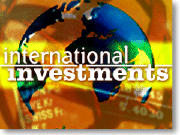|
Ready for the Wild East?
|
 |
September 19, 1996: 2:16 p.m. ET
Investors can now tap Eastern Europe, but the risks are many
|
NEW YORK (CNNfn) -- Seven years after the revolutions of 1989 dismantled the Soviet bloc, Eastern European equity markets are expanding at a rate that dwarfs other emerging markets and has Western investors drooling.
Just look at the numbers. The Czech Republic is up 37.67 percent since January. Poland is up 73.03 percent. Hungary is up 105.14 percent. And Russia, the most volatile and promising of the young stock markets, is up more than 107.09 percent despite uncertainties over President Boris Yeltsin's health.
But before you decide to invest in the region, there are several things you ought to know. Investing in Eastern Europe comes with a variety of unusual risks, from inconsistent securities laws to currency fluctuations to political upheavals. This is not an arena for the feint of heart.
Compounding the risks is a lack of financial disclosure. Many of the former Soviet bloc markets have only skeleton securities regulations. Companies routinely fail to report basic information. Unusual tax laws can wilt profits. And U.S. investors often complain that the rules keep changing.
"These markets are prone to tremendous fluctuations because they are not very big," said John Teall, analyst with the fund-tracking firm Lipper Analytical. "A little money in or out can drastically affect the market."
Enter the new mutual funds. With millions of dollars and teams of analysts in each country, mutual funds might present small investors with the least dangerous way to invest in Eastern Europe. The funds have enough clout to insist that companies conform to Western accounting practices, and they have the resources to monitor trading inconsistencies, fund managers said.
"Eastern Europe is going through a dynamic transition to a true free-market economy," said Arpad Pongracz, a Zurich-based manager who runs the Vontobel Eastern European Equity Fund, a no-load fund. "But investors need to be careful. Just because these countries declare themselves to be capitalists doesn't mean they aren't just using the same old communist strategies under a new name."
Pongracz is one of a handful of fund managers now active in Eastern Europe. While closed-end country funds have existed in the region for several years, it is only recently that small investors could buy into no-load mutual funds, allowing them to tap the region's high-growth markets.
Experts recommend that you put no more than 5 percent to 10 percent of a total portfolio into Eastern Europe.
"Unless you are right there in the country, you are probably not going to be aware of the importance of a situation right away," said Richard Slinn, a vice president at Van Kasper & Co. in San Francisco who invests in global markets for individuals and institutions. "For the small investor, the best way to go is with a fund that gives them access to these markets without requiring them to do all the fundamental research on companies."
Vontobel started its Eastern Europe fund earlier this year, joining a list that now includes Pioneer Emerging Markets and Lexington Troika Dialog Russia. Other funds, such as Robertson Stephens Emerging Markets, also give investors a stake in the region, while balancing the portfolio with more stable markets.
The Vontobel fund, with a $1,000 minimum initial investment, has received particularly high grades. It is up more than 40 percent since inception and has managed to protect against severe volatility.
Pongracz said he is trying to establish a fund that focuses on undervalued companies with proven track records, viable products, earnings growth that tops 20 percent a year and experience with shareholders. He will not invest in most government-owned industries, nor will he invest in countries where less than 60 percent of the companies are privatized.
"There must be political continuity and economic discipline," he said. "I know there are going to be huge movements in the markets. In the early years of democracy, it is natural that there will be changes, parliamentary fights. These countries have to learn themselves how to go about democracy. There will be turbulence, there will be changes. I just want to know that they are committed to a free market."
Hungarian-born Pongracz, who has worked as a European equities analyst for much of the past decade, will not invest in every former Soviet bloc country. He has avoided Slovakia, Romania and Bulgaria -- countries where the commitment to a new system is questionable. Most of the fund's $37 million in assets is invested in 35 companies in Poland, Hungary, the Czech Republic and Russia.
Recent political developments -- the election of a communist in Poland, Yeltsin's upcoming heart surgery -- have raised some concerns that reforms will be rolled back. That is a worry Pongracz no longer shares.
"It's no longer possible to show up at the factory with a machine gun and say, `I'm going to take it back,'" he said. "Today, you are not going to find any region of the world which is going to offer such potential. We are at the edge of a very short window of opportunity."
|
|
|
|
|
 |

|

